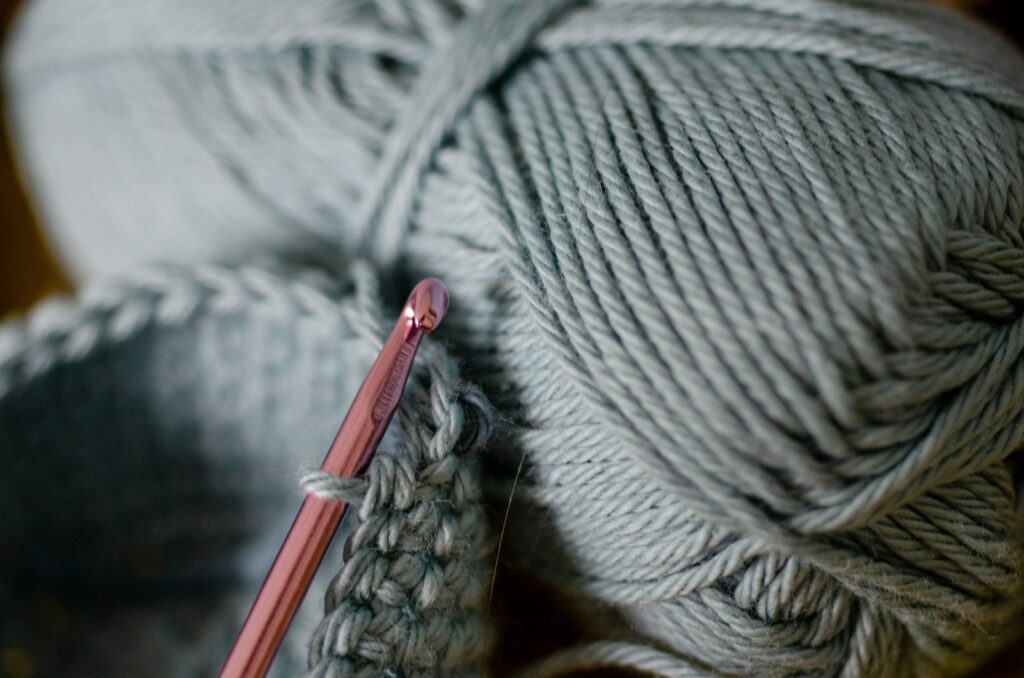
Why Learn Basic Crochet Stitches?
Basic crochet stitches are great to learn if you are a beginner in crochet. This is because many patterns that you find on this website and the internet will involve a combination of these stitches to create complex projects. This is great because this means that if you invest a little bit of time learning the basic crochet stitches outlined in this blog post, you will be on your way to making complex and fun crochet projects that will expand your skill set. For instance, stitches like the alpine stitch involve using back and front post double crochet stitches. If you master a basic double crochet stitch, you are already 80% of the way there to making the alpine stitch, as you would just have to learn what it means to crochet around front and back posts.
Materials Needed for Crochet
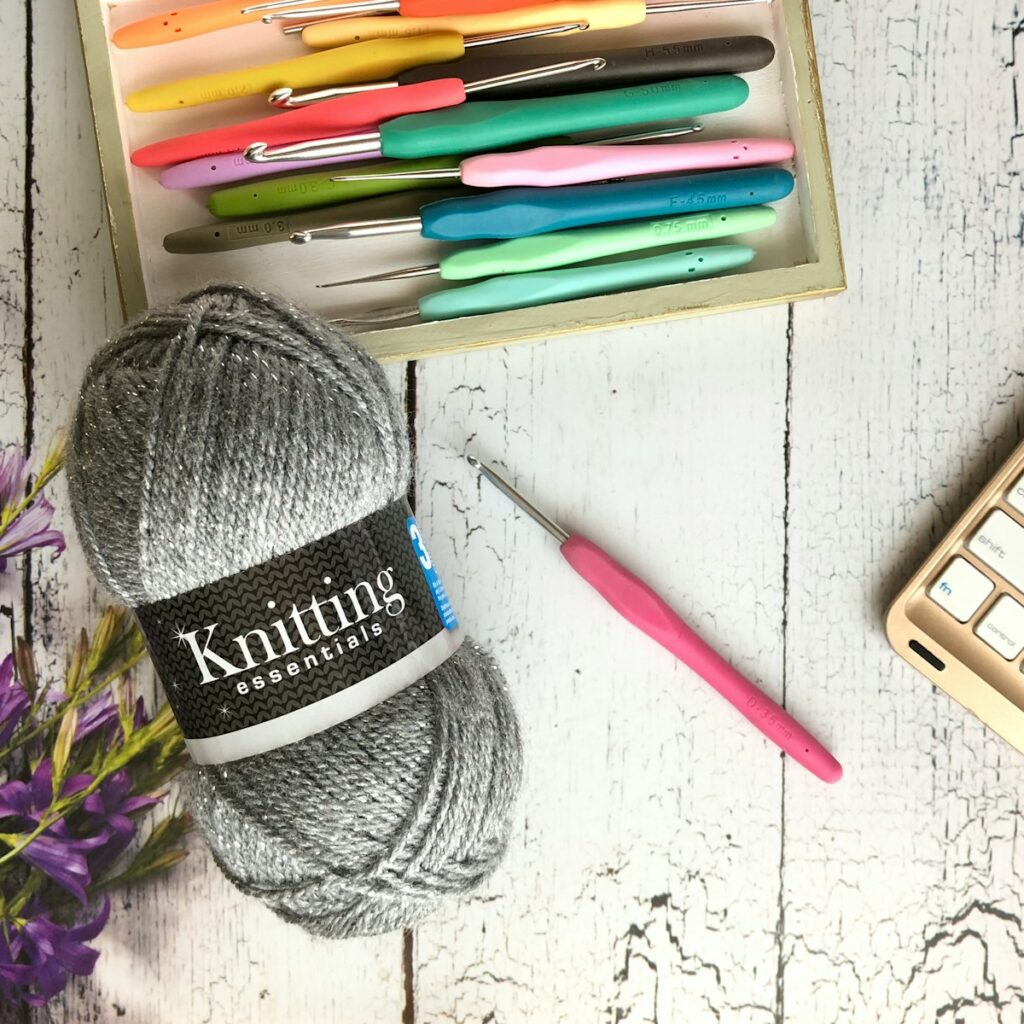
In order to learn the basic crochet stitches that are mentioned in this blog post, I recommend using a thick yarn. This means that the weight of the yarn should be around 4 and upwards. You can usually find yarn weights written on the side of a skein of yarn on its label. Throughout all of the basic stitch tutorials on this website, I decided to use a chainette yarn, but you can also use conventionally spun yarn to achieve similar results. Once you have chosen your yarn, you can pick the corresponding hook size needed to make stitches in your yarn. This is usually also written on the side of the yarn ball on its label in a little square that features a crochet hook with its size written around it. In theory, you only need to have two items to start crocheting: yarn and a hook. But, your experience with crochet can also benefit from other things as well, which is outlined in the article titled 5 Essential Crochet Supplies and Skills.
How Do I Choose the Right Yarn and Hook Size?
I highly recommend using a thick chainette yarn if you can find one near you, as the advantage with using chainette yarn is that it won’t split when you make crochet stitches using your hook. This is because it is basically a knitted tube. Usually, chainette yarn is knitted using yarn/string that is even smaller than the chainette yarn itself, so it is really unlikely that your hook would split the yarn as you work stitches. If you can’t find any chainette yarn, using a more conventionally spun yarn that has a yarn weight of 4 and upwards is fine too. Once you have decided on a yarn that you want to use, you can choose the corresponding hook size needed to work stitches. When you have a yarn ball that you would like to use to learn crochet, you can find the corresponding hook size for the yarn you chose on it’s label like so:
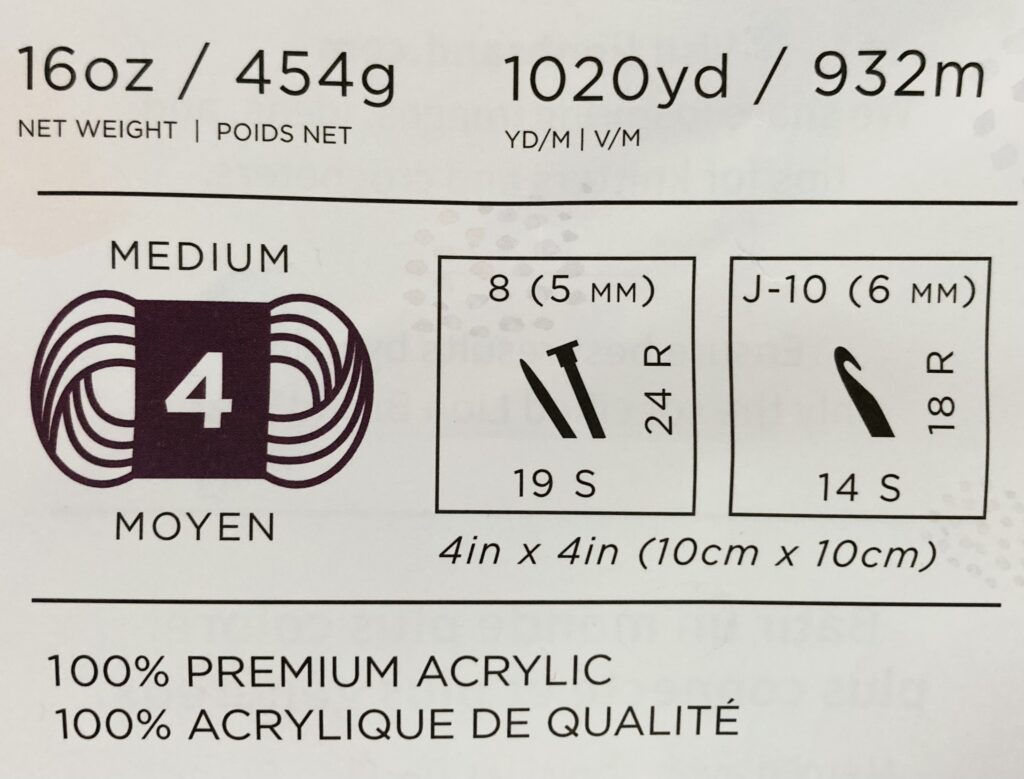
The above image is from a skien of Lion Brand Pound of Love Yarn that I bought. It’s a great, soft yarn to work with when you crochet sweaters, scarves, or mittens. You can see that the rightmost box shows you the hook size that you can use to crochet in this yarn. It also tells you on the left that this is a weight 4 yarn.
Five Essential Crochet Stitches to Learn
1) Chain Stitch (ch)
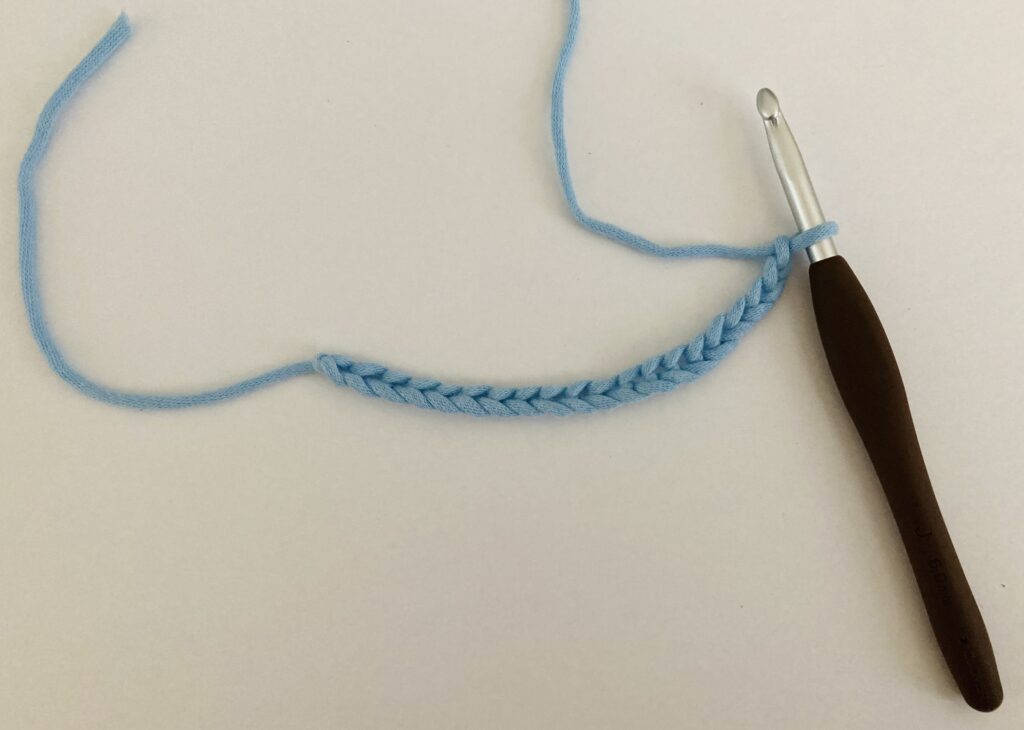
Where to Find Step-by-Step Instructions for Chain Stitch
The chain stitch that is usually taught to beginners is a regular chain stitch, but you can also learn to make foundation chain stitches as well. These types of chains are stretchier than their regular counterparts, but they are both great skills to have as a beginner crocheter. You can find a detailed tutorial that teaches you how to crochet this particular stitch in the blog post titled How to Crochet A Chain. I’ve included several images and explanations that streamline the process of learning how to crochet this wonderful and paramount stitch.
Common Uses of Chain Stitch
The chain stitch is undoubtedly one of the most fundamental stitches any beginner crocheter should learn. A chain stitch will serve as the foundation for many, many projects you will make in the future. The length of a chain stitch that you make would depend on how wide or tall you are aiming to make your project. The chain stitch serves as a foundation for almost every single project that you make in crochet.
2) Single Crochet (sc)

Where to Find Step-by-Step Instructions for Single Crochet
Single crochet is another fundamental and useful stitch for basic crochet projects. This stitch is the second stitch that you can learn after the chain stitch, as it teaches you how to yarn over. This stitch can also teach you the distinction between yarn-ing over and yarn-ing under, which is important if you would like to learn single crochet variations. You can learn more about how to single crochet in the blog post I will be writing about How to Single Crochet.
Common Uses of Single Crochet
You can use single crochet stitches in any project that needs tight knit fabric. This means that fabric using single crochet may not be as airy as expected. Due to its tight knit structure, the single crochet stitch can also tend to be stiff. To counteract its stiffness, there are stitches that mimic granny stitches like the moss stitch, which is made by alternating single crochet stitches with chain stitches. This stitch is great to use in almost any project, such as in scarves, beanies, coasters, mittens and more!
3) Half Double Crochet (hdc)
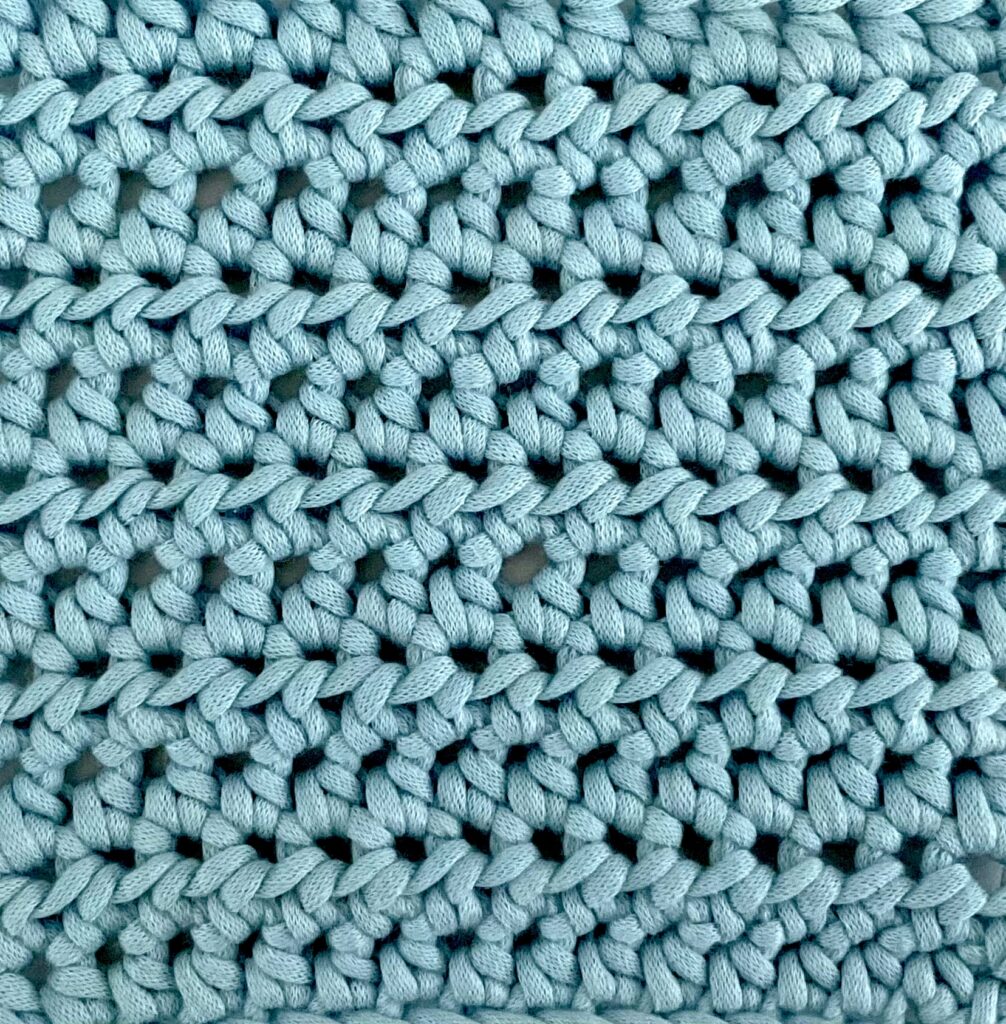
Where to Find Step-by-Step Instructions for Half Double Crochet
Half double crochet is a stitch that is taller than a single crochet but shorter than a double crochet. The advantage of a half double crochet stitch is that it allows for more flexibility, while being closely knit just like single crochet stitches. This means that fabric that is made of half double crochet tends to have more drape, although it can be a little bit stiff. Half double crochet is great because it builds upon what you have learned in both learning How to Single Crochet and How to Crochet A Chain. It also works up faster than a single crochet because of its stitch height. You can find detailed instructions on How to Half Double Crochet in my blog post, which has several images to demystify the learning process.
Common Uses of Half Double Crochet
This stitch isn’t limited in terms of its utility. You can use this stitch to make almost any project, such as scarves, sweaters, tote bags, granny squares and more. This may be one of the stitches that is just as commonly used as double crochet due to its versatile stitch height.
4) Double Crochet (dc)
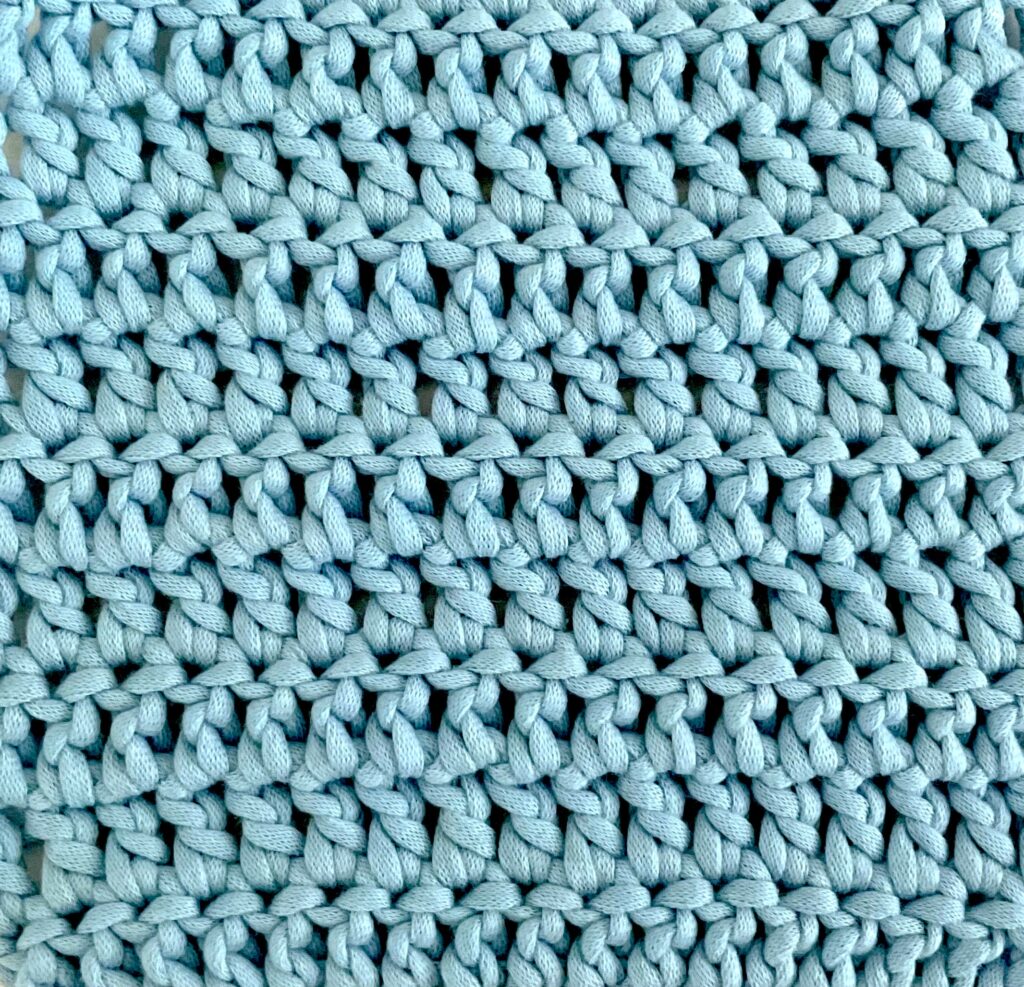
Where to Find Step-by-Step Instructions for Double Crochet
Double crochet stitches almost have the same exact structure of half double crochet stitches. In fact, the first couple of steps is the same for both half double crochet and double crochet. This is what makes it such a great stitch to learn. It adds a little bit of variety and challenge, but it isn’t so hard that it takes learning a whole new stitch. In fact, most of what we learned in How to Crochet a Chain and How to Half Double Crochet can be reused here. That’s why I’ve broken down the steps to crocheting a double crochet stitch in my blog post called How to Double Crochet, so that it is clear as to what exactly the difference is between half double crochet stitches and double crochet stitches.
Common Uses of Double Crochet
Double crochet is quite an airy stitch to work with, because of each individual stitch’s height. This is what makes double crochet a great stitch for scarves, beanies, and sweaters as well as blankets that can be worked up quickly. Fabric made of double crochet stitches is also quite stretchy, and can offer a lot of drape. Double crochet is also used to crochet cables alongside treble crochet stitches, as their stitch length allows them to criss-cross or can be worked in a slanted fashion to create cables. This stitch also works great when creating meshes.
5) Treble Crochet (tr)
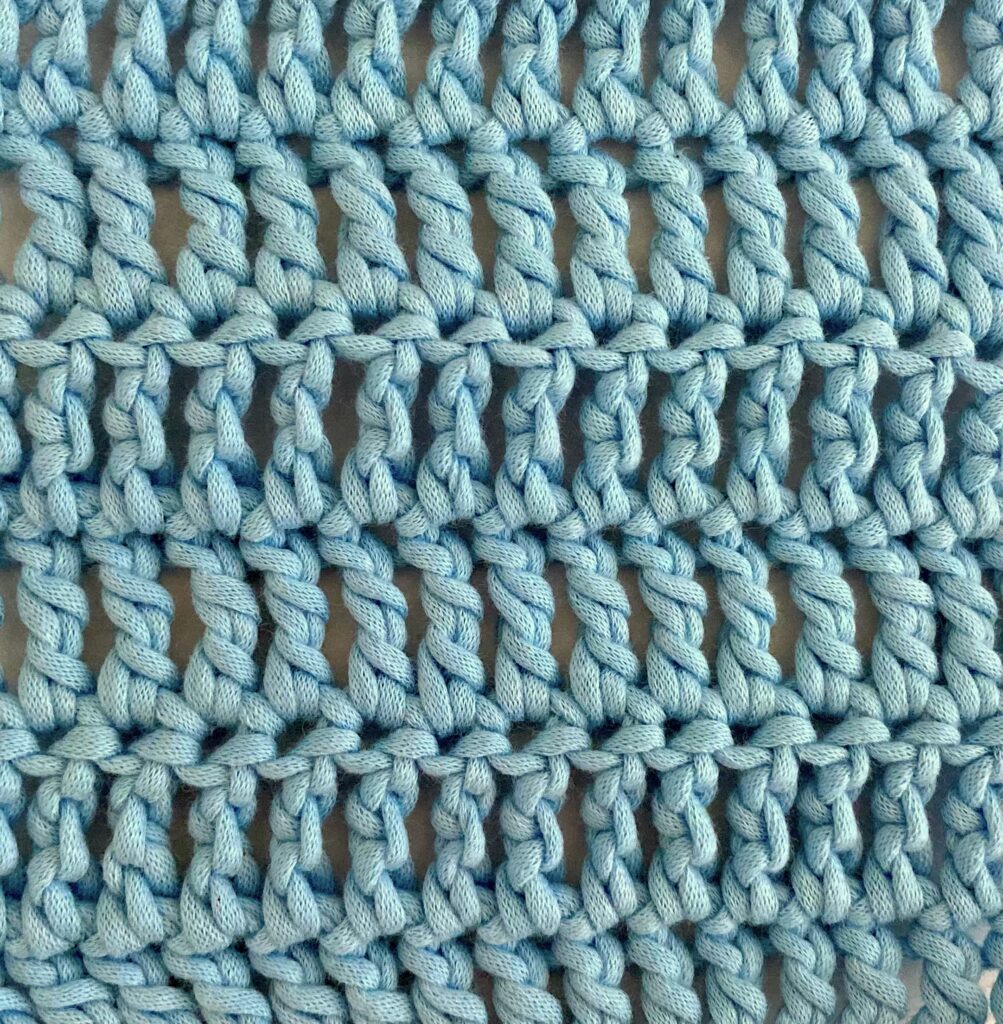
Step-by-Step Instructions for Treble Crochet
Of these basic stitches that I have recommended so far, treble crochet is definitely the tallest and mesh-like stitch. This stitch involves repeatedly yarning over, which makes it the epitome of all of the stitches I have mentioned before. This is also a great stitch to learn because it is tall enough to be manageable for new crocheters to learn, but short enough to work up quickly. You can find the instructions for this stitch in the blog post I will writing about How to Treble Crochet.
Common Uses of Treble Crochet
Due to its very tall stitch height, treble crochet works great in scarves that are very airy, or bags that are mesh-like. I don’t use treble crochet very much myself, so I think the chain stitch, single crochet, half double crochet, and double crochet are used more often in projects than treble crochet. Nevertheless, treble crochet is great when used to crochet cables.
Conclusion
Recap of Essential Crochet Stitches
To sum up, some of the most important and useful stitches you can learn as a beginner include the chain stitch, single crochet, half double crochet, double crochet, and treble crochet. These stitches are great to learn because they help cover all the bases needed to start working on complex and involved projects in your crochet journey.
Encouragement for Beginners to Keep Practicing
It’s possible that these stitches won’t immediately click, in which case remember to take breaks and come back to your crochet hook and yarn once you have a clear mind. You may even benefit from using a crochet kit, reading a book about how to crochet, or by watching people on YouTube crochet. It may take a while to learn exactly how to hold your hook and yarn, so just keep practicing a little bit every day or even week. Hopefully, you will be making more complex crochet projects in no time, so keep at it!

Leave a Reply